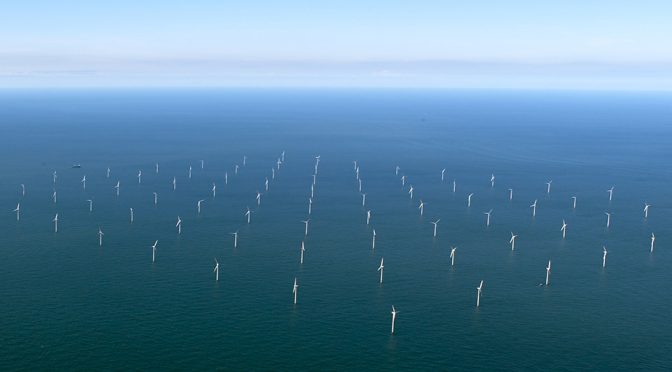Hornsea 2 is the largest offshore wind farm and will provide electricity to more than 1.3 million UK homes.
DNV, the independent energy expert and assurance provider, has successfully completed Lenders’ Technical Due Diligence on Ørsted’s Hornsea 2 project, the world’s largest offshore wind farm.
Working in close collaboration with Ørsted and the lenders, legal, financial and insurance advisors, DNV conducted an independent energy yield assessment and undertook a detailed technical due diligence study on all aspects of the offshore wind farm and the associated offshore transmission assets, which include the world’s largest capacity offshore AC substation.
Drawing on DNV’s extensive offshore wind experience, this work identified the key technical and commercial aspects of the project for consideration by the multiple financial institutions which supported the 50% ownership stake divestment to the successful consortium of AXA IM Alts, acting on behalf of clients, and Crédit Agricole Assurances. DNV will provide further support to these stakeholders with operational monitoring services.
DNV’s Energy Transition Outlook highlights that, with the electrification of economies surging ahead, renewables will provide an increasing proportion of the energy demand. The share of offshore wind in total wind electricity generation will increase steadily, rising globally from 8% in 2020 to 34% in 2050, 6% of which is floating offshore.

Hari Vamadevan, Executive Vice President, and Regional Director UK & Ireland of Energy Systems at DNV, said: “We would like to congratulate Ørsted on reaching the incredible milestone of developing the world’s largest offshore wind farm – we are honoured to have played a part in this success. This was a fantastic opportunity for our multidisciplinary teams to add value to the development of this hugely impressive renewable energy project and demonstrates the project scale needed if we are to increase the pace of the energy transition.”
Hornsea 2 has recently commenced full commercial operations and consists of 165 Siemens Gamesa wind turbines located 89 km off the Yorkshire coast in the North Sea, making the 1.32 GW project the largest capacity of any operating wind farm.
Published:
03 November 2022
Author:
Chris Gowen
Contact:
Neil James Slater
Penda Sall

Neil James Slater
Head of Media Relations, Energy Systems

Penda Sall
Media Relations, Energy Systems
About DNV
DNV?is an independent assurance and risk management provider, operating in more than 100 countries. Through its broad experience and deep expertise DNV?advances safety and sustainable performance, sets industry standards, and inspires and invents solutions.?
Whether assessing a new ship design, qualifying technology for a floating wind farm, analysing sensor data from a gas pipeline or certifying a food company’s supply chain, DNV?enables its customers and their stakeholders to manage technological and regulatory complexity with confidence.??
Driven by its purpose, to safeguard life, property, and the environment, DNV?helps its customers seize opportunities and tackle the risks arising from global transformations. DNV is a trusted voice for many of the world’s most successful and forward-thinking companies.?
In?the?energy industry?
DNV provides assurance to the entire energy value chain through its advisory,?monitoring, verification, and certification services.?As the world’s leading resource of independent energy experts?and technical advisors, the assurance provider helps?industries and governments to?navigate the many complex, interrelated transitions taking place globally and regionally, in the energy industry. DNV is committed to realizing the goals of the Paris Agreement, and supports?customers?to transition faster to a deeply decarbonized energy system.?


